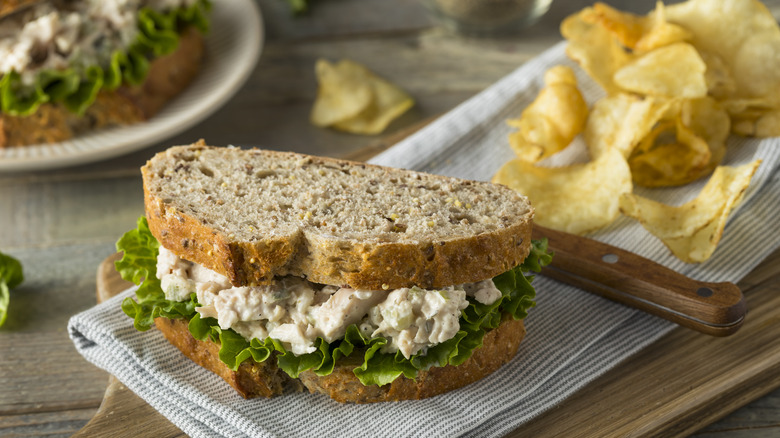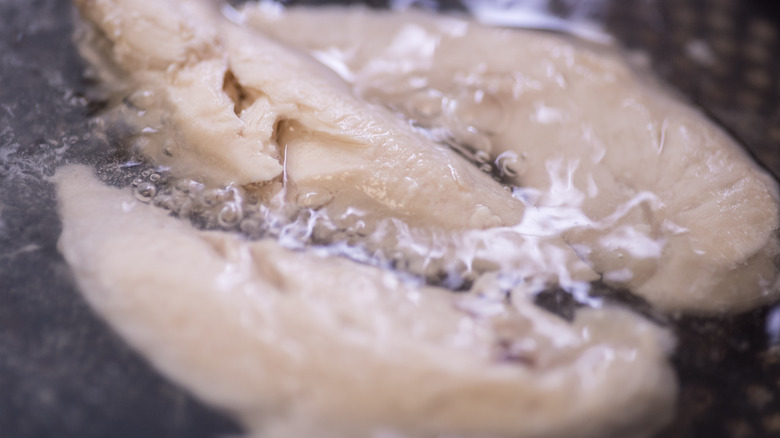The Absolute Best Way To Cook Chicken For Chicken Salad
Whether stuffed into a sandwich, piled on top of some greens, or scooped up with some crackers, it's hard to think of a better lunchtime option than chicken salad. Typically featuring cooked chicken bound in some type of a creamy dressing that's very often mayonnaise-based, the dish is almost infinitely customizable, with common additions including chopped apples, nuts, dried fruit, fresh herbs, and spices such as tandoori and curry blends (via Martha Stewart).
If you like chicken, then it's a safe bet that you've whipped up your fair share of this old standby dish over the years. But even if you're an experienced salad maker, you may not have settled yet on the most basic aspect of the dish: How to cook the bird that's in it. Techniques vary, with some advocating for roasting the chicken prior to chopping and dressing it (via Food Network) and others stating that leftover grilled chicken works just fine (via Allrecipes). But there's one cooking method to rule them all when it comes to chicken for chicken salad, according to Cook's Illustrated, and that's poaching.
Poaching keeps chicken soft and moist
If poaching isn't a cooking method you often rely on, let us break it down for you. Poaching consists of placing a protein — usually, chicken or fish — into liquid such as water or stock, bringing it to a simmer, and then gently cooking it through (via Serious Eats). And while poaching often gets a bad rap for producing dry, rubbery chicken, Serious Eats points out that if you start your chicken in cold water and simmer it until just cooked, you'll wind up with a result that's far from tough but rather moist, tender, and juicy.
Cook's Illustrated concurs, naming poaching as the ultimate way to cook chicken that's bound for chicken salad. The outlet states that the technique retains the fat and moisture of a piece of chicken much better than dry-heat cooking methods such as roasting or searing. Plus, when poaching in simple salted water, the chicken comes out tasting neutral, making the method a great choice for then slathering the meat with tons of flavor by way of creamy dressings and fresh and dried herbs.
The outlet even has a super-gentle approach for poaching, recommending slipping chicken breasts into salted water, bringing it to a "sub simmer" at 175 degrees Fahrenheit, then turning off the stove and letting the meat cook by residual heat only — a method that produces the softest, most tender chicken. So the next time chicken salad is on the menu, grab your stock pot and get poaching.

